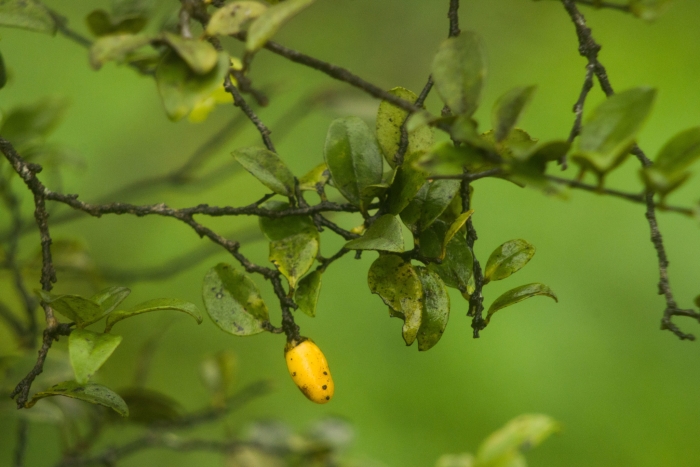Lama
(Diospyros sandwicensis)
Lama (Diospyros sandwicensis)
/
/

Kevin Faccenda
CC BY 4.0
Image By:
Kevin Faccenda
Recorded By:
Copyright:
CC BY 4.0
Copyright Notice:
Photo by: Kevin Faccenda | License Type: CC BY 4.0 | License URL: http://creativecommons.org/licenses/by/4.0/ | Rights Holder: Kevin Faccenda | Publisher: iNaturalist | Date Created: 2022-02-21T11:06:59-08:00 |

























Estimated Native Range
Summary
Diospyros sandwicensis, commonly known as lama, is a small to medium-sized evergreen tree endemic to the Hawaiian Islands. It is typically found in both dry and wet forests, as well as in diverse mesic forest ecosystems at elevations ranging from 16 to 4003 feet. Lama trees can grow to a height of 20-39 feet and are characterized by a straight trunk and a rounded canopy. The bark is smooth and light gray, while the heartwood is a distinctive reddish-brown and notably hard, which made it valuable to Native Hawaiians for crafting various tools and for religious purposes. The leaves of lama are glossy, leathery, and oblong, adding to the tree’s aesthetic appeal. It produces small, inconspicuous greenish-white flowers that are followed by round, yellow to orange berries, which are edible and enjoyed by local wildlife.
In cultivation, lama is appreciated for its cultural significance, attractive appearance, and the shade it provides. It is used in native plant gardens and reforestation projects. The tree is relatively low-maintenance, requiring well-drained soils and able to tolerate a range of moisture conditions from dry to wet. It is best suited to full sun or partial shade environments. While lama is not commonly affected by serious diseases or pests, it can be susceptible to root rot if planted in poorly drained soils. Gardeners should also be aware that the tree’s slow growth rate may require patience when grown for ornamental purposes.CC BY-SA 4.0
In cultivation, lama is appreciated for its cultural significance, attractive appearance, and the shade it provides. It is used in native plant gardens and reforestation projects. The tree is relatively low-maintenance, requiring well-drained soils and able to tolerate a range of moisture conditions from dry to wet. It is best suited to full sun or partial shade environments. While lama is not commonly affected by serious diseases or pests, it can be susceptible to root rot if planted in poorly drained soils. Gardeners should also be aware that the tree’s slow growth rate may require patience when grown for ornamental purposes.CC BY-SA 4.0
Plant Description
- Plant Type: Tree
- Height: 6-30 feet
- Width: 8-15 feet
- Growth Rate: Moderate
- Flower Color: White, Yellow
- Flowering Season: Spring, Summer, Fall, Winter
- Leaf Retention: Evergreen
Growth Requirements
- Sun: Full Sun, Part Shade
- Water: Medium
- Drainage: Medium
Common Uses
Bird Garden, Low Maintenance
Natural Habitat
Native to dry and wet forests, as well as mesic forest ecosystems in the Hawaiian Islands
Other Names
Common Names: Lama, Hawaiian Ebony, Ēlama, Hawaiian Persimmon
Scientific Names: , Diospyros sandwicensis, Diospyros ferrea f. degeneri, Diospyros ferrea f. kauaiensis, Diospyros ferrea f. lanaiensis, Diospyros ferrea f. obtusa, Diospyros ferrea f. ovata, Diospyros ferrea f. pubescens, Diospyros ferrea f. sclerophylla, Diospyros ferrea f. subcoriacea
GBIF Accepted Name: